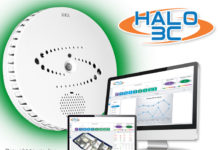Interview with Scott Manson, Cyber Security Leader for Middle East and Turkey, Cisco
Introduction:
Cisco’s security research organization Talos’ initial analysis of the global ransomware worm attack that has affected multiple organizations worldwide points to the attack starting in the Ukraine, possibly from software update systems for a Ukrainian tax accounting package called MeDoc.
This appears to have been confirmed by MeDoc itself.
MeDoc is a widely used tax software used by many organizations in or doing business with Ukraine.
There have been other reports of this attack appearing in France, Denmark, Spain, the UK, Russia and the US.
Once this ransomware enters your system, it uses three ways to spread automatically around a network, one of which is the known Eternal Blue vulnerability, similar to how last month’s WannaCry attack unfolded.
What’s clear from this, and recent attacks, is that organizations must prioritize patching systems to lower their risk profile.
We have to patch as quickly as we can. In addition, making back-ups of key data is a fundamental of any security program.
(Learn More, courtesy of Cisco and YouTube)
What can you tell us about the attack?
- Today we saw our second ever ransomware worm, coming on the heels of WannaCry last month
- This ransomware outbreak has affected multiple organisations in several countries today, Cisco’s security research organisation Talos is actively investigating this new malware variant.
- This new ransomware variant encrypts the master boot record (MBR) of a system. Think of the MBR as the table of contents for your hard drive – clearly very important.
- Talos’ initial analysis points to the attack starting in the Ukraine, possibly from software update systems for a Ukrainian tax accounting package called MeDoc.
- This appears to have been confirmed by MeDoc.
- MeDoc is a widely used tax software used by many organizations in or doing business with Ukraine.
- There have been other reports of this attack appearing in France, Denmark, Spain, the UK, Russia and the US.
- Once this ransomware enters your system, it uses three ways to spread automatically around a network, one of which is the known Eternal Blue vulnerability, similar to how last month’s WannaCry attack unfolded.
What is ransomware?
- A type of malware that locks down your computer/system and takes control/encrypts your data and demands a ransom
(Learn More, courtesy of CNN and YouTube)
What is bitcoin?
- A crypto currency used online
- Bitcoin is not controlled by any one government or state
- Because it allows for anonymity, it is ideal for attackers
(Learn More, courtesy of Financial Times and YouTube)
Do we know what organisations were impacted?
- Reported victims so far include Ukrainian infrastructure like power companies, airports, public transit, and the central bank, as well as Danish shipping company Maersk, pharmaceutical company Merck, the Russian oil giant Rosnoft, and institutions in India, Spain, France, the United Kingdom, and beyond.
How did this attack start?
- Cisco’s security research organization Talos’ initial analysis points to the attack starting in the Ukraine, possibly from software update systems for a Ukrainian tax accounting package called MeDoc.
- This appears to have been confirmed by MeDoc itself. MeDoc is a widely used tax software used by many organizations in or doing business with Ukraine.
How is it spreading?
- Once this ransomware enters your system, it uses three ways to spread automatically around a network, one of which is the known Eternal Blue vulnerability, similar to how last month’s WannaCry attack unfolded.

How is this different to WannaCry? Is there a ‘killswitch’ for this attack?
- This ransomware doesn’t seem to incorporate the errors that hindered WannaCry from spreading.
- Specifically, this attack doesn’t seem to have a kill switch function.
- It is also harder to detect since it moves within a network.
- It is not scanning of the internet like WannaCry did.
Who is responsible for this attack?
- Attribution is difficult in attacks like this
- Cisco is focused on understanding the attack and protecting our customers
What is Cisco’s recommendation for customers to protect against this?
- Ensure your organisation is running an actively supported operating system that receives security updates.
- Have effective patch management that deploys security updates to endpoints and other critical parts of your infrastructure in a timely manner
- Run anti-malware software on your system and ensure you regularly receive malware signature updates
- Implement a disaster recovery plan that includes backing up and restoring data from devices that are kept offline. Adversaries frequently target backup mechanisms to limit the possibilities a user may be able to restore their files without paying the ransom.
- If vulnerabilities aren’t patched, an organization will continue to be at risk for infection by this ransomware.
(Ransomware is the most profitable type of malware in history, how are you defending against it? In this Security Chalk Talks with Bart McGlothin, Solution Architect, you can learn how the Ransomware Defense Solution creates a defense in depth architecture using Cloud Email Security with Advanced Malware Protection (AMP), OpenDNS Umbrella and AMP for Endpoints with Threat Grid. These offerings work together effectively to detect and respond to Ransomware attacks. Courtesy of Cisco or YouTube)
To learn more visit http://www.cisco.com/c/en/us/solutions/enterprise-networks/ransomware-defense/index.html?






















